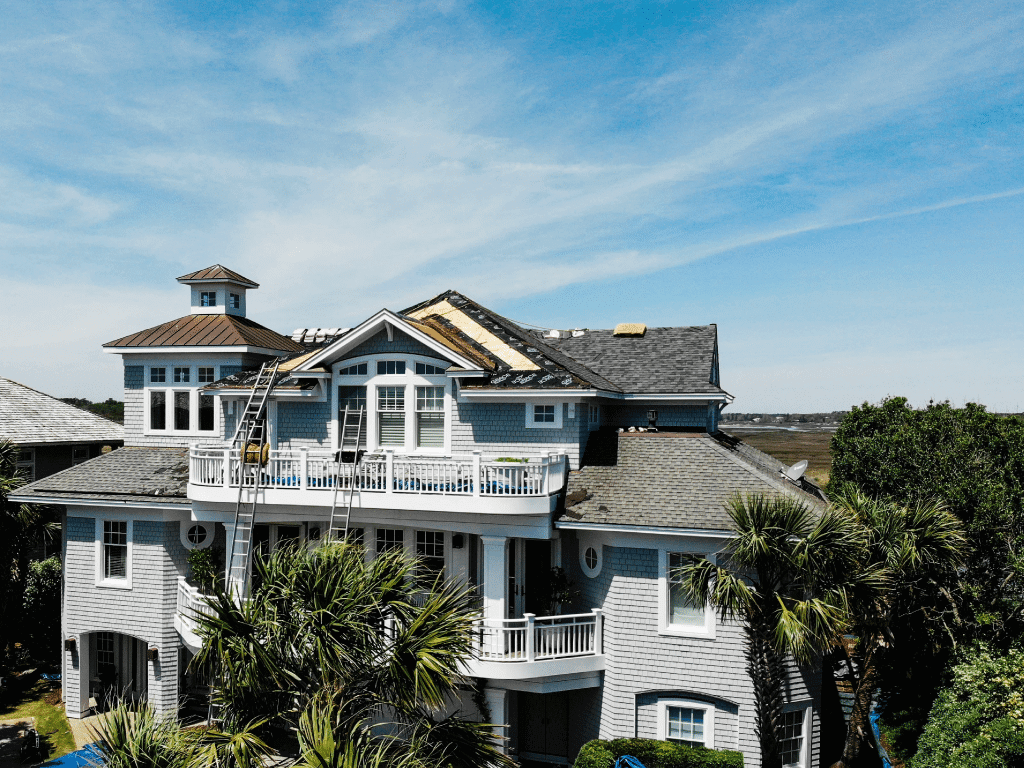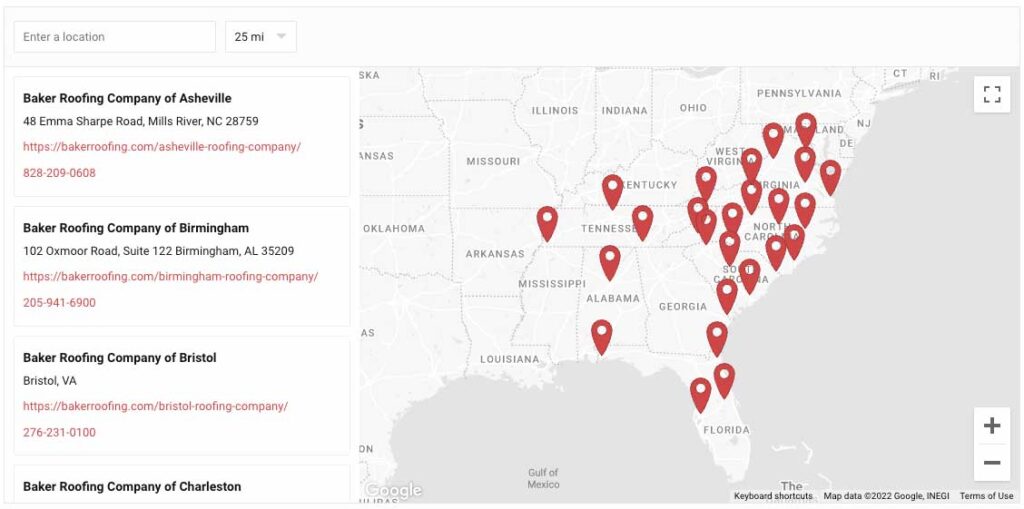Whether your beach home is your permanent address or simply your weekend getaway, ensuring that your roof stays in good shape is essential for the longevity of your home. And that begins with the right roof material.
Different geographic areas have special needs. Homes built near areas prone to forest fires, for example, need to be sure to have fireproof roofs. Homes built in very warm areas need roofs that reflect the heat, helping the home stay cooler.
Special Roofing Considerations for a Beach Home
The same consideration needs to be taken for homes located near the coast, where wind, salt, and humidity can damage certain roofing materials, making it necessary to replace the roof more frequently.
Wind in the Southern coastal areas average a tolerable 17 mph, but when hurricanes or tropical storms veer close, the gusts can (and have) peaked at 98 mph. Heavier roofing material, tested and approved for high winds, should be used to make sure the shakes or shingles won’t blow off.
Salt from the ocean can corrode certain materials, like some metals. Look for materials that won’t corrode or that have the additional protection of an alloy coating.
Humidity is also a factor, as moisture can damage roofing materials if not properly maintained. With an annual average of nearly 80% humidity, East Coast beach roofs should be built with materials that can withstand moisture.
“Whether your beach home is your permanent address or simply your weekend getaway, ensuring that your roof stays in good shape is essential for the longevity of your home. And that begins with the right roof material.”
Given the need for roofs that stand strong against wind, salt, and humidity, coastal homes may be built with these materials:
Copper — unlike iron that rusts and then breaks down, copper reacts to exposure to air and water by forming a green outer layer that is called a patina. The patina protects the copper from corrosion, making copper a good alternative for roofing in an area that has salt and moisture. Copper is also heavy, which helps it withstand wind. It is one of the more expensive types of roofing material and is seen more often on older homes than on new construction.
Slate — these heavy tiles can last 100 years. If you’re looking for a lifetime roof, this is one to consider. Slate must be installed properly and it is expensive, but it can withstand the elements better than almost any other material.
Asphalt shingles — or composition shingles — are one of the most popular types of roofs. Although they are not as durable as copper or slate, they are easy to install and are less expensive than the other materials. However, asphalt shingles may crack and are more likely to sustain wind damage.
With a variety of choices and considerations, which roofing type is right for you? It is an individual decision, based on your budget, preferences, as well as your home’s needs, and architecture. At Baker Home Exteriors, we can recommend the best solution for your specific needs. As the largest roofing company in the coastal beach area, we provide expert advice and service on roof repairs and construction. If your beach home needs a new roof, don’t hesitate to call us for advice, recommendations, or installation.



